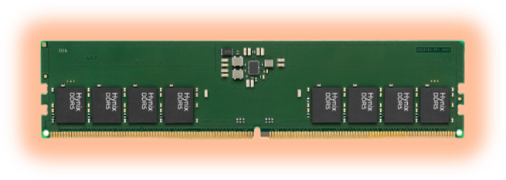What does the CHIPS+ Act mean for the long-life memory chip supply chain?

Last month, the CHIPS+ Act was signed into law. CHIPS+ stands for Creative Helpful Incentives to Produce Semiconductors and Science, and its goal is to boost US semiconductor R&D and manufacturing to further bolster America’s leadership role in the industry. Today, the USA produces only 10% of the global semiconductor chip supply and is heavily dependent on production overseas to meet demand. The pandemic and its concurrent lockdowns, border closings, and the global chip shortage emphasized the consequences and risks of this discrepancy between geographical supply and demand.
Building for the future
The CHIPS and Science Act aims to increase US self-sufficiency when it comes to electronic chips by allocating over $50 billion to support domestic semiconductor R&D, production, and workforce development. The bulk of the funding (74%) will be spent on spurring manufacturing, mostly incentivizing investments in new semiconductor technologies over legacy products.
The USA is not the only country to invest in the semiconductor industry. Securing supply in semiconductor chips has grown into a geopolitical and economic priority for countries across the world. Since the start of the pandemic, South Korea and China both announced a 10-year funding plan to increase chipmaking capacity, and earlier in 2022, the EU launched the European Chip Act.
The American semiconductor ecosystem
If the US CHIPS+ Act fulfills its goals, domestic chip production will grow. However, buyers won’t see immediate effects in their supply chain as new fabs generally take three to five years to come online and increase capacity in the Western world. Industry insiders also point out that in order to establish a secure domestic supply chain, the entire semiconductor ecosystem needs to be addressed. This does not only include fabrication capacity, and R&D, but also talent and raw materials. To build out a more independent American semiconductor chip supply chain, there needs to be enough domestic supply for every link in the chain, including raw materials and packaging. Shortages may occur further upstream as chip manufacturing across the world increases at a faster pace than mining and refining volumes of raw materials and rare earth metals.
Impact on the memory chip supply chain for long-life applications
Similar to the semiconductor industry as a whole, the memory chip industry heavily depends on overseas production. CHIPS+ is expected to increase US-based production of advanced memory chips and memory chip components. However, the newly-passed Act is focused on investments for new chip technologies, with only $2 billion - or less than 4% - being set aside for mature semiconductors. Therefore, the supply chain of memory chips for long-life applications is unlikely to experience major shifts up or down as a result of the CHIPS+ Act. However, with the industry not yet fully recovered from the global chip shortage, analysts anticipate ongoing supply chain challenges in the near future, especially for mature technologies. Working with a reliable supplier for those components and building out a robust end of life (EOL) strategy remain key going forward.
SMARTsemi is your supply chain partner for DRAM components, eMMC solutions, and SD/microSD Flash Memory Cards for long-life applications. With 20+ years of industry experience, we understand your challenges and have aligned our priorities with yours to simplify your memory chip supply chain for the long run. We know what you need before you need it. Get a jump start and request a sample today.







